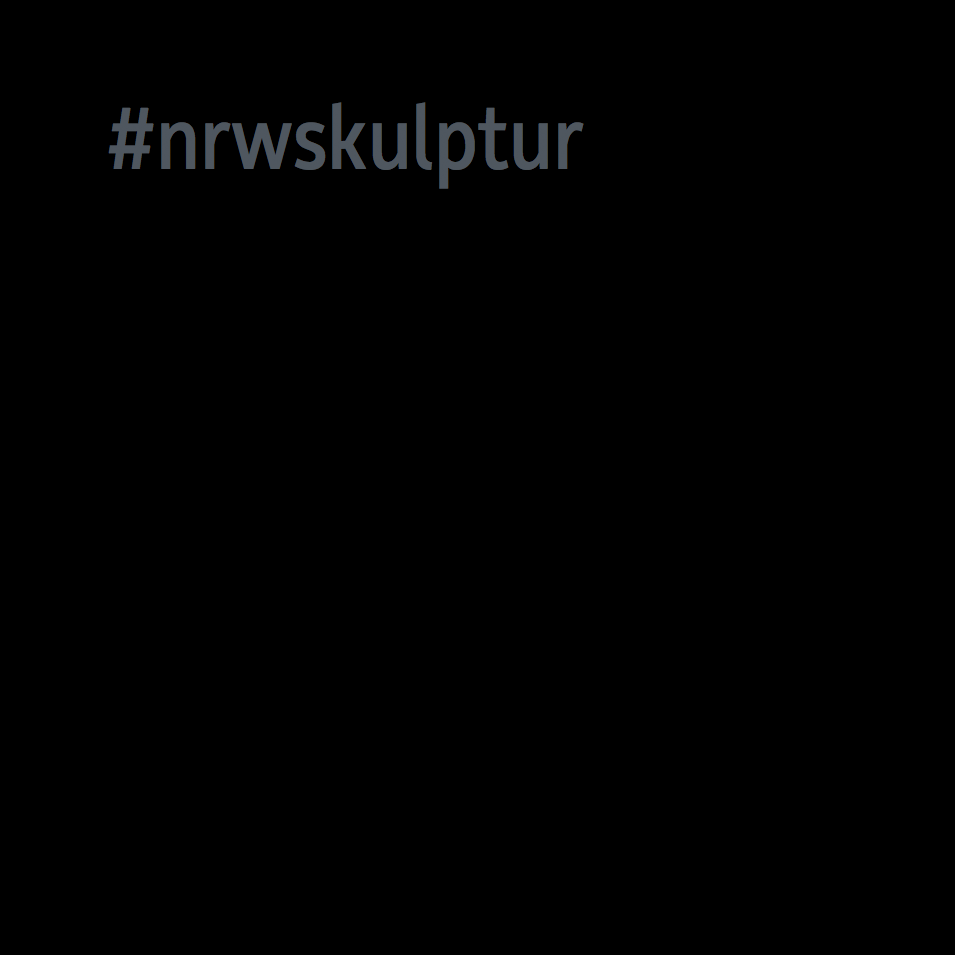Giant Pool Balls
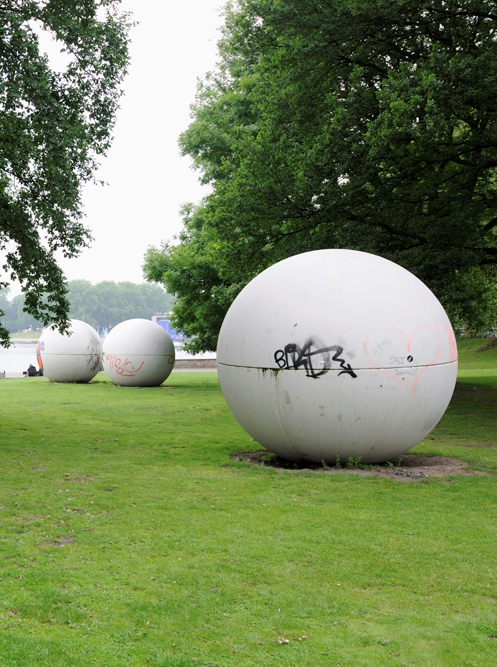


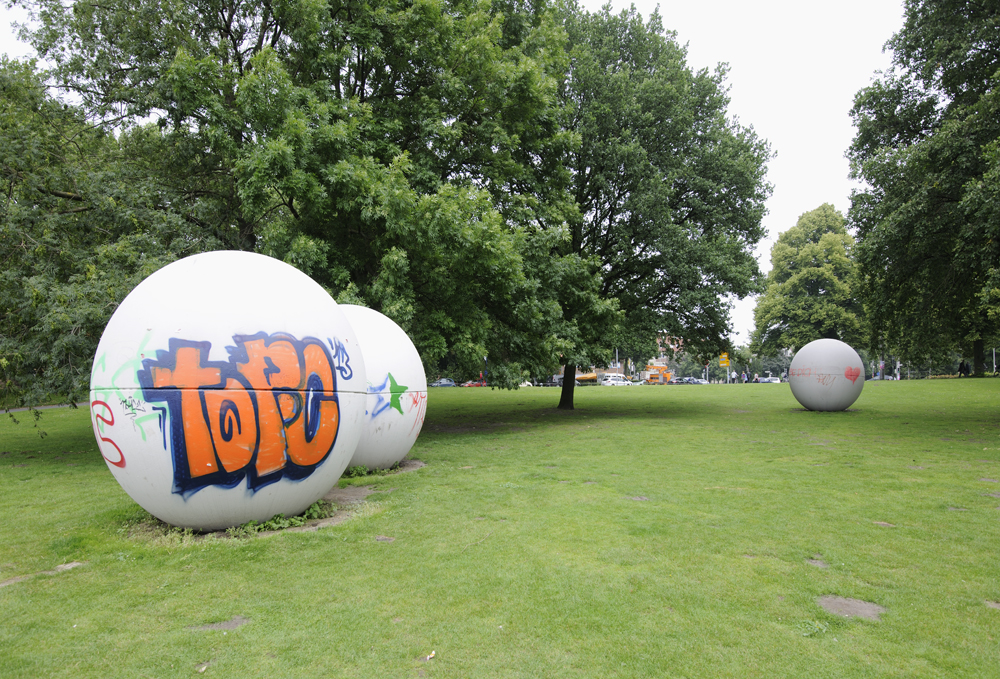
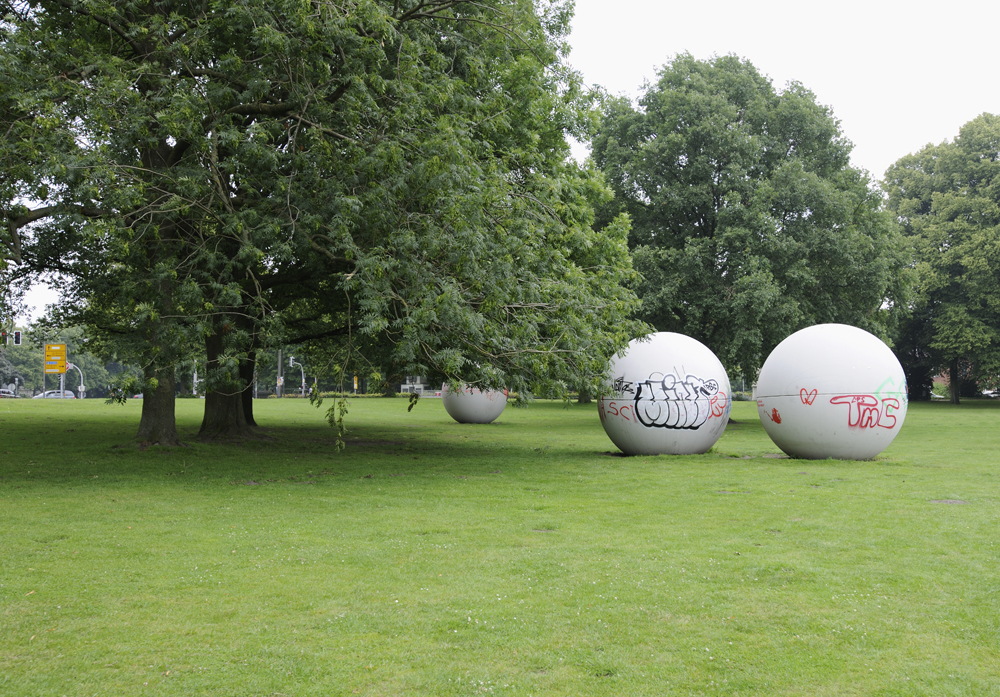
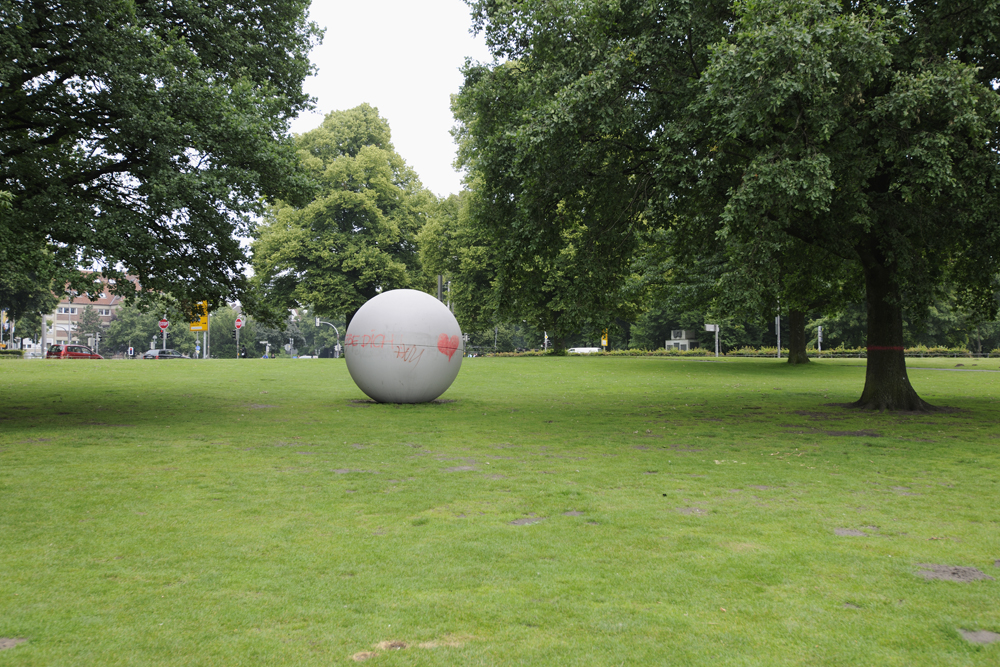
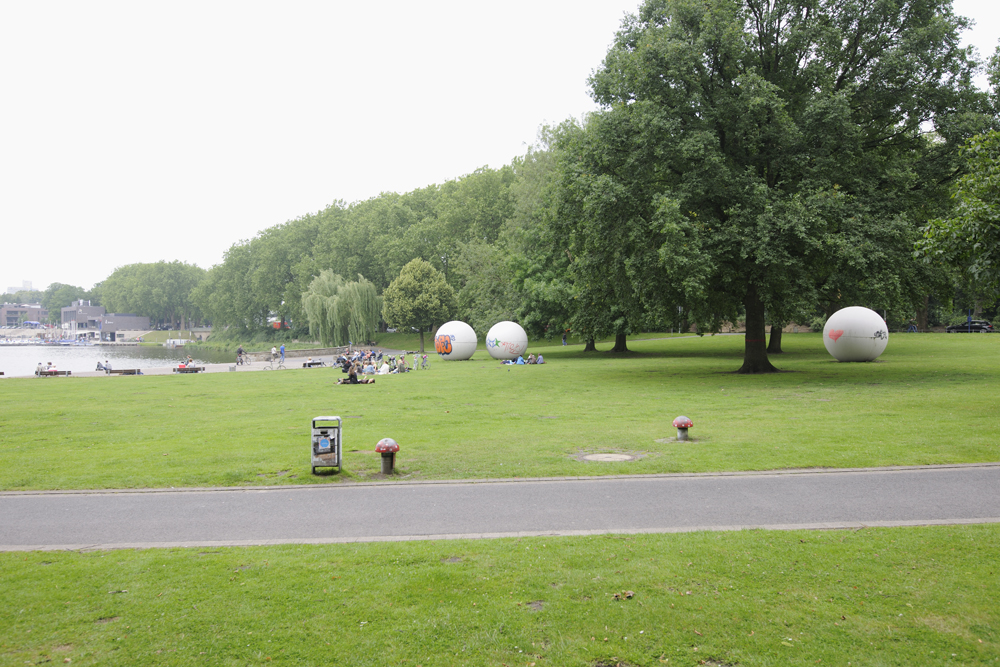
One of the most succinct quotations on the subject of art in public spaces comes from Claes Oldenburg’s 1961 “Ode to Possibilities”: “I am for an art that does something other than sit on its ass in a museum.” This is precisely what he achieved with his contribution to the first Skulptur Projekte in Münster in 1977. His Giant Pool Balls went from being one of the most controversial works to one of the city’s most iconic landmarks.
They interact with the city’s history, which is shaped by numerous armed conflicts. Not far away, a historic cannonball can still be seen in the city wall today. At the same time, the flat grassy areas around Aasee allow the space to be interpreted as a large billiard table. There, you can find three balls arranged to correspond to an actual game that the artist played.
Although monumental and static, they create the impression of a game in motion and have already enticed many critics to attempt to roll them into the lake in vain. They remain on the grass along the Aasee as a constant reference to the notion that one’s own personal standards are always relative and as a playful and graceful call for a change in perspective.
Additional information://oldenburgvanbruggen.com/largescaleprojects/poolballs.htm” target=”_blank”>http://oldenburgvanbruggen.com/largescaleprojects/poolballs.htm
Claes Oldenburg
← Zur Startseite
Münster, on the grass along the Aasee (Adenauerallee)
